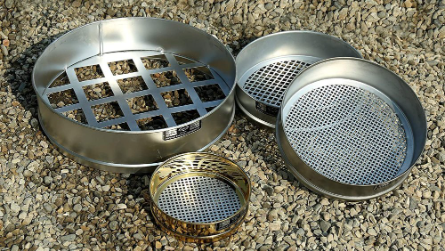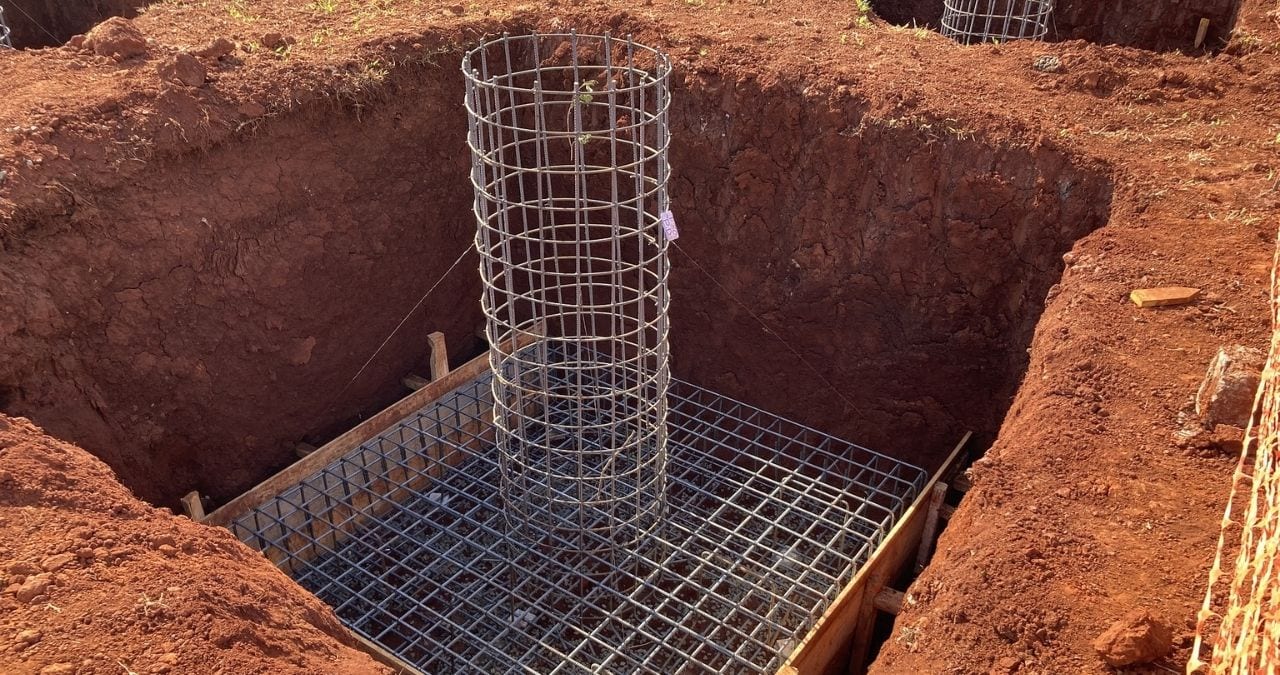A sieve is a device with a wire mesh or perforated surface used to separate particles of different sizes. The mesh has standardized openings, allowing particles smaller than the holes to pass through while retaining larger ones. This process, known as sieve analysis, is used to verify material quality, determine particle size, ensure batch consistency, and assess compliance with ASTM standards and model code criteria.
Does the code ever require sieve analysis? Yes. Are sieve analyses and the sieving process used on every project? Yes, at least on every project that has contract documents, uses concrete, masonry, or earthwork and paving operations during the construction of the structure. Project special inspections often require sieve analysis (gradations) or stipulate specific material compliance criteria that require sieve analysis.
Kudos to the women and men who serve our industry as laboratory technicians, lab supervisors, and laboratory managers. They are often unsung and underappreciated. Even if we limit this conversation to just our primary topics of sieve analysis and particle size testing, the degree of training, proficiency, and knowledge of ASTM testing standards and equipment calibration standards is phenomenal. Lab staff are highly proficient with numbers and are well-organized; these are fundamental requirements for accuracy, reliability, and career advancement in a scientific testing environment. Laboratory personnel must verify that the equipment and personnel for sieve analysis, as well as related equipment, are competent and calibrated.
An accredited laboratory must follow a system of checks and documentation, including equipment certification, standardized testing, and staff training. These quality control measures ensure that results are accurate, repeatable, and traceable to international standards, such as ASTM, ISO, and/or the National Institute of Standards and Technology (NIST). Laboratory personnel are generally responsible for calibrating all laboratory equipment, like molds, sieves, scales, measuring devices, thermometers, and testing equipment, to produce accurate results so as not to approve material for a project that is unsuitable or non-compliant with the contract documents, as well as ASTM standards or applicable building codes.
Sieve analysis and aggregate particle size processes are fundamental tests for characterizing construction materials and classifying them according to code. Errors in this process can lead to serious problems, or even catastrophic failures, at the job site, so accuracy is paramount. A common and elusive sieve analysis error can occur when prepping field soils for laboratory testing. Hard soil “clods” that have dried out can be difficult to fully break down during the preparation of the lab test sample. Failure to break down these “clods” can result in the soil being classified as much coarser than it really is. An unsuitable soil type can then be considered suitable and used in the earthwork phases of the project. A similar incident occurred at a recent project site, resulting in foundation problems that ultimately cost the laboratory owner millions of dollars following legal battles. Similarly, faulty gradation analysis in the laboratory can result in project concrete mix designs being approved (aggregate/gradation-wise) that should have been rejected. Project failures due to poor concrete performance can be costly to the laboratory if legal remedies are sought. Testing laboratories and their personnel are aware of the responsibility they have and carefully monitor their lab equipment, processes, and individual performances in the laboratories.
Various laboratory-testing procedures are stipulated by code, including sieve analysis, gradation analysis, moisture-density determinations, material quality tests, and soil classification tests. Typical project quality assurance programs include all of these and more. Project earthwork operations require moisture-density tests, soil classification tests, and field density tests on compacted fill materials, as well as a plethora of laboratory tests and inspections on concrete, masonry, and paving materials. Moisture-density tests, often referred to as laboratory Proctors, are particularly important and sensitive tests that significantly impact the quality of the compacted fill beneath the building, as well as the final code-required bearing capacity of the soil. Lab technicians performing the Proctor tests must follow code-required ASTM standards as they prepare the laboratory samples for testing, as well as all the required soil tests on Proctor samples being examined in the laboratory. Faulty testing procedures in the lab can yield erroneous soil test results, potentially allowing unsuitable soils to be used in the compacted fill at the site.
The use of unsuitable fill materials in the compacted fill could lead to undesirable settlement of site soils and subsequent building foundation failures. A substantial amount of project site soils consist of suitable soils that can be used as compacted fill material, as well as unsuitable soils that cannot be used in the project’s compacted fill. The lab Proctor, sieve analysis, and soil classification tests identify specific competent job site soils that can be used versus the unsuitable soils that cannot be used in the construction of the project’s compacted fill. Nothing is more critical on a construction project than a solid, competent foundation, including the fill beneath the building.
From a testing and inspection standpoint, the goal of achieving a competent building foundation always begins with the soils laboratory technicians and a well-planned pre-construction soil-testing program for the project soils. Project site soil samples are tested and inspected in the laboratory and subjected to a host of lab soil tests to determine the soil characteristics of the site soils. Soils are classified according to the Unified Soil Classification System (ASTM D2487) for engineering purposes based on particle size, liquid limit, soil plasticity, and gradation analysis. All project soil types are identified according to ASTM C2487 IDs such as GC, CL, ML, SC, and SL, as well as more recognizable geological names (which most of us understand). To hear the soils lab guys speak of the GC soils, CL-ML soils, and the CL soils is like hearing a foreign language spoken. You don’t understand them, but you know that they understand each other.
Many of the project site soils will be targeted for lab moisture-density determinations, hydrometer analysis, specific gravity tests, natural moisture tests, consolidation tests, shrink-swell tests, and other more sophisticated lab tests, as necessary. By the time actual construction commences at the project, the soils lab personnel will have classified all the project soil types, enabling the project engineers to determine which soils are suitable for use in the field and which types are not. They will know which soils are moisture-sensitive and how thick the soil lifts in the fill should be to obtain maximum density with the least amount of compaction energy. It is incredible how much you know about the project soils EVEN before earthwork operations begin thanks to the preliminary laboratory soils work on the project.
In addition to performing laboratory tests and inspections on laboratory test samples in accordance with building code, ASTM standard criteria, and the contract documents, the lab technicians must do the following:
- Ensure that laboratory air temperatures and the temperature of test equipment, water, and test samples are maintained at the appropriate temperature according to the code and applicable test standard.
- Ensure that all laboratory test samples are of the appropriate size and weight in accordance with reference standard criteria.
- Review all laboratory equipment and tools required for each test to confirm compliance with applicable test method cited by the code and referenced
- Ascertain that all measuring devices, such as rulers, straightedges, weights, thermometers, flasks, etc., that are used to calibrate laboratory equipment are traceable to the National Institute of Standards and Technology (NIST).
- Review lab tests, work, and test reports of anyone who reports to
- Interact with project managers and project engineers to provide advice and counsel regarding laboratory test reports and results.
- Be knowledgeable about relevant ASTM test standards and quality standards, as well as revisions and updates of applicable ASTM test standards and Quality System Manual (QSM).
One of the more important duties that usually falls to laboratory personnel is the periodic calibration of all laboratory equipment, instruments, and tools. It is an ongoing process that never truly ends, and some equipment requires more frequent calibration than others. The air meter devices used to check the percentage of air-entrainment in concrete, for instance, must be calibrated every three months, as opposed to the more typical calibration periods of six months to annually for other laboratory equipment. Air meter pots can be tricky to calibrate and/or repair and require the utmost patience.
The calibration process includes almost every item in the laboratory, including all the various scales, sieves, soil molds, hammers, concrete tamping rods, slump cones, measuring devices, and even the moist room used to cure the concrete test specimens. Inspection of laboratory sieves as part of the QSM calibration review can be annoying at times, simply because it involves hundreds of sieves and thereby potential non-compliance issues.
Download a PDF of this article here.
But wait! We have a lot more to say!
For a complete picture of the Code and how it relates to Special Inspections, F&R would love to provide a virtual AIA-accredited Lunch & Learn presentation to the professionals at your firm.
Trouble Deciphering the Code? Call the Experts at F&R!
Alan S. Tuck, Director of Code Compliance & Training, Author of Speaking in Code
T 540.344.7939 | M 540.798.4440 | [email protected]






